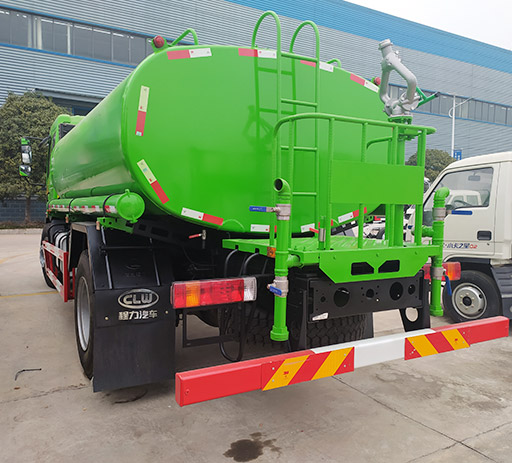Understanding Average Car Mileage Life: How Long Can Your Vehicle Last?

When it comes to owning a vehicle, one of the most crucial aspects to consider is its mileage life. The average car mileage life indicates how many miles a vehicle can travel before significant repair costs begin to pile up or the vehicle becomes less reliable. The longevity of a car depends on various factors, such as the make and model, driving conditions, maintenance practices, and more. This comprehensive guide will delve into all aspects of average car mileage life, helping you make informed decisions about your vehicle’s upkeep and when to consider an upgrade.
What is Average Car Mileage Life?
The average car mileage life refers to the typical distance a car can travel before it experiences major problems or requires extensive repairs. In general, many vehicles can last anywhere from 150,000 to 300,000 miles if properly maintained. This section will explore the various factors influencing car mileage and help you understand how to extend your vehicle’s life.
Factors Affecting Car Mileage Life
Numerous factors can impact a car’s mileage life. Here are some of the most important:
1. Make and Model
Certain manufacturers are known for producing more reliable vehicles. Brands like Toyota and Honda often have a reputation for longevity, while others may experience problems sooner.
2. Maintenance Practices
Regular maintenance is crucial for extending vehicle life. Consistent oil changes, tire rotations, and brake checks can significantly improve mileage longevity.
3. Driving Conditions
Frequent driving in harsh conditions—like extreme temperatures, mountainous terrains, or heavy traffic—can accelerate wear and tear on your vehicle.
4. Driving Habits
Aggressive driving, such as rapid acceleration or hard braking, can negatively impact a vehicle’s overall lifespan. Consistent speed and gentle handling can improve longevity.
5. Quality of Fuel
Using high-quality fuel can prevent engine problems and enhance performance. Poor-quality fuel can lead to more frequent repairs and lower mileage life.
Average Mileage Based on Vehicle Class
The average mileage life can vary by the type of vehicle. Here’s a breakdown of common vehicle classes:
| Vehicle Class | Average Mileage Life |
|---|---|
| Sedans | 150,000 – 200,000 miles |
| SUVs | 150,000 – 300,000 miles |
| Trucks | 200,000 – 300,000 miles |
| Luxury Cars | 100,000 – 200,000 miles |
| Electric Vehicles (EVs) | 150,000 – 300,000 miles |
Understanding Mileage by Vehicle Type
Each vehicle category has its characteristics that affect longevity. For instance, trucks are often built for durability, which facilitates higher mileage. In contrast, luxury cars might offer high performance but tend to have shorter average mileage due to the complex technology involved.
How to Extend Your Car’s Mileage Life
By implementing specific strategies, car owners can help extend their vehicle’s mileage life significantly. Here are some practical tips:
1. Regular Maintenance Checks
Adhering to a maintenance schedule is vital. Follow your owner’s manual for oil change intervals, fluid checks, and overall service recommendations.
2. Quality of Parts and Fluids
Using genuine parts and high-quality fluids can ensure better performance and reliability. Opt for products recommended by the manufacturer.
3. Monitoring Tire Health
Tires play a significant role in safety and performance. Check tire pressure regularly and rotate your tires to promote even wear.
4. Driving Smoothly
Adopt gentle driving habits. Accelerate gradually and avoid sudden stops to minimize stress on your vehicle.
5. Avoid Short Trips
If possible, combine errands to minimize short trips. Short driving distances prevent the engine from reaching its optimal operating temperature.
Signs Your Car May Be Nearing Its Mileage Life Limit
Being aware of the signs that your vehicle may be nearing the end of its mileage life can help you plan accordingly. Here are some common indicators:
1. Warning Lights
Dashboard warning lights, such as check engine lights, often indicate underlying issues that need attention.
2. Unusual Noises
Listen for strange noises, such as knocking, grinding, or hissing, which can signal problems with the engine, transmission, or brakes.
3. Decreased Performance
If your vehicle struggles to accelerate or has trouble shifting gears, it may indicate that repairs are on the horizon.
4. Frequent Breakdowns
Experiencing regular mechanical failures, even minor ones, can suggest that your car is becoming less reliable.
Cost Considerations for High-Mileage Cars
Understanding the financial implications of keeping a high-mileage vehicle is crucial. Here are some cost considerations:
1. Repair Costs
As cars age, they often require more repairs, which can become costly. Consider setting aside a budget for unexpected expenses.

2. Insurance Rates
Insurance costs may vary depending on the vehicle’s age and mileage. Older cars may have cheaper premiums but be mindful of repairing costs.

3. Resale Value
High-mileage cars generally depreciate faster than lower-mileage counterparts. Understanding market trends can help you set realistic resale expectations.
The Role of Technology in Extending Car Life
Modern technology plays a significant role in extending the mileage life of vehicles. Here are some technological advancements that can help:
1. Engine Management Systems
Advanced engine management systems can optimize fuel usage and reduce emissions, contributing to a longer-lasting engine.
2. Diagnostic Tools

Using onboard diagnostic (OBD) tools allows you to assess your car’s condition continuously and preemptively address issues before they escalate.
3. Making Use of Apps
Utilizing mobile apps designed to monitor vehicle health can provide reminders for maintenance and alert you to potential problems.
Environmental Impact of Higher Mileage Vehicles
Owning a higher-mileage vehicle can have various environmental implications. Here’s what to consider:
1. Emissions Reports
Older vehicles may not meet current emissions standards, potentially affecting air quality. Regular checks and updates can mitigate this issue.
2. Fuel Efficiency
Newer cars tend to have better fuel efficiency, which means fewer emissions overall. Evaluate if investing in a newer vehicle may be beneficial long-term.
3. Recycling and Disposal
When it’s time to part with your high-mileage car, consider eco-friendly disposal methods, including recycling parts and oily fluids responsibly.
Frequently Asked Questions (FAQs)
1. How many miles can a car last on average?
Generally, many vehicles can last between 150,000 to 300,000 miles with proper maintenance.
2. What factors most affect car mileage life?
Factors include make and model, maintenance practices, driving habits, and environmental conditions.
3. How often should I service my high-mileage vehicle?
It is recommended to follow the manufacturer’s guidelines, typically every 3,000 to 7,500 miles for oil changes. Other systems should also be checked regularly.
4. Should I buy a high-mileage vehicle?
Buying a high-mileage vehicle can be a good option if it has been well-maintained and comes at a fair price. Always have it inspected before purchase.
5. How can I tell if my car is still worth repairing?
Assess repair costs versus the car’s current market value. If repair costs exceed the vehicle’s worth, it might be time to consider a replacement.
6. Is it worth investing in maintenance for an older car?
Investing in maintenance for an older car can be worthwhile if it runs well and suits your needs. Frequent repairs may not be worth the cost if the vehicle is showing signs of severe wear.
